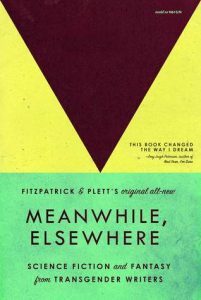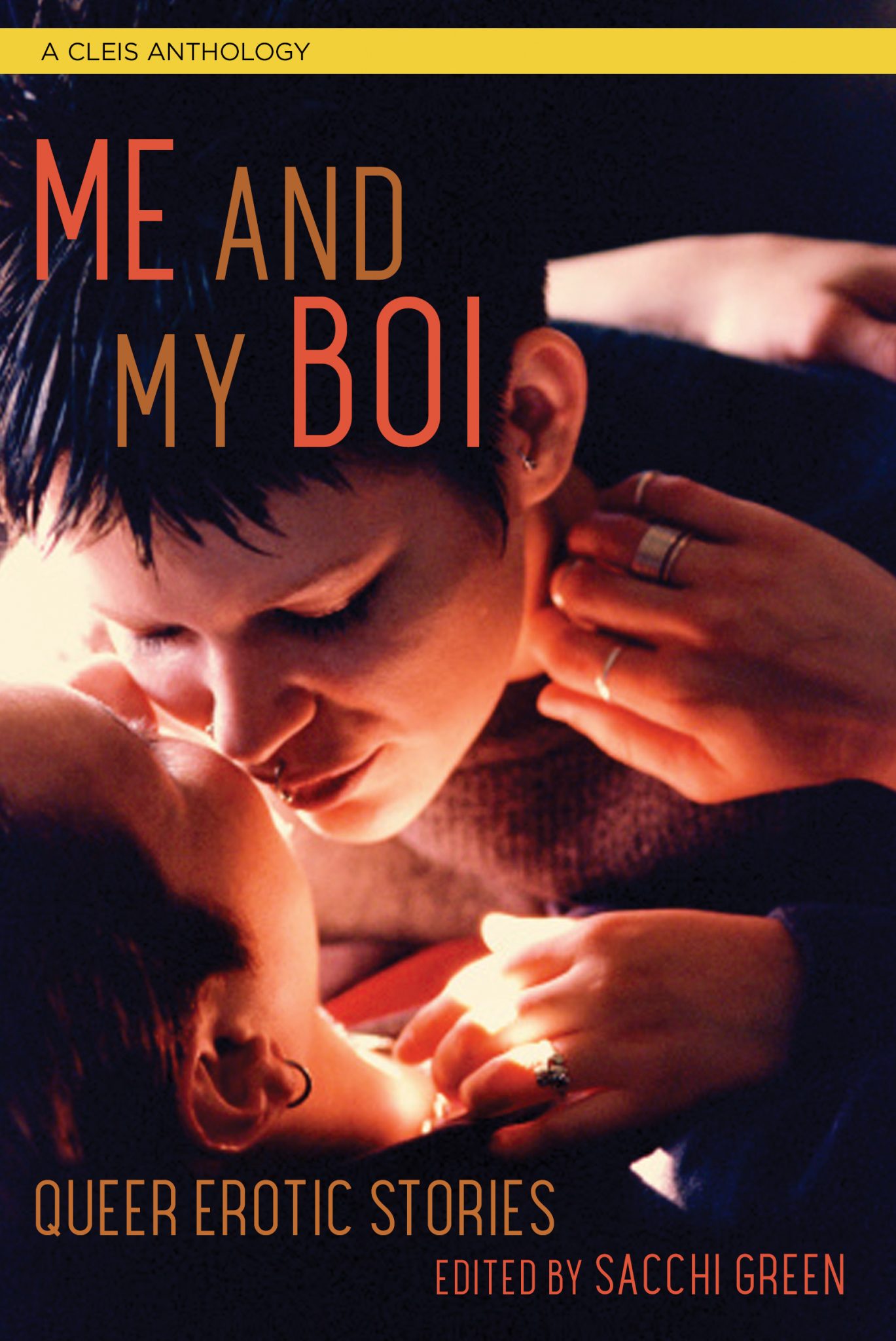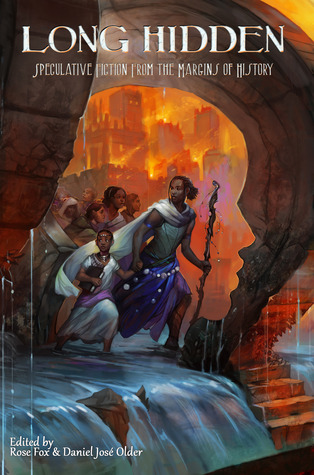This is a huge book. Metaphorically, of course: it’s a big step in queer lit that we have a collection like this now, a collection of SFF stories all by and about trans people. We’re finally moving towards having stories that neither minimize queerness nor make it our only defining feature. But actually, I’m talking about it’s physical size. It’s 447 pages, and the book is taller and wider than your average paperback: more like a textbook than a novel. Although I really enjoyed reading this, it did take me a while to get through, because its physical size makes it awkward to hold and the length was intimidating.
It was well worth the time it took me to read it, though! I was happy to see that there are plenty of sapphic stories included: in fact, at least 10 of the 25 stories has a women-loving-women main character. Although this collection is sci fi and fantasy, and trans people in general, there’s definitely a stronger presence of science fiction and trans women.
As always in an anthology, some of these were bigger hits than others, but even the stories I didn’t personally enjoy I could see other people loving. (Like “It’s Called Fashion,” which I found difficult to follow, but I can see other readers really clicking with.) The stories vary a lot in their scope and premise. Some build a complex cyberpunk world in 20 pages, while others imagine a world only slightly different than ours. One story follows someone in space quietly ruminating about microaggressions, while another follows a woman whose brain-eating amoeba communicates through dreams and grows via orgasms.
A few stories I found so fascinating that I could easily write papers about them: “Satan, Are You There? It’s Me, Laura.” by Aesling Fae attempts to reclaim Satan as a trans woman, and as the protector of trans women. Outside of context, the devil and a trans woman sounds offensive, but Fae makes it an empowering thesis. Like Carmilla the series takes the monstrous lesbian and turns her into a hero, this story does the same thing with the devil.
The other story that really made me think was “Rent, Don’t Sell” by Calvin Gimpelevich. In this world, the technology for body-swapping had been made viable, but under capitalism, it’s used for things like: swapping your body with a trainer’s so they can do your exercise for you, hiring someone to detox for you, and, of course, having sex while inhabiting someone else’s body. This has a lot of interesting discussions about identity. The side character is a trans women who swapped bodies with a trans guy, but now regrets it and wants to transition with her own body, so she’s suing to try to get it back.
Some of my other favorites were “What Cheer” by RJ Edwards, where the main character spends a couple days with her alien close, and learns appreciation for herself and her life; “After the Big One” by Cooper Lee Bombardier, where a motley crew of queer argue about discourse and privilege, but have to come together to survive disaster; and “Gamers” by Imogen Binnie, which is about Zelda and time travel and being in an unhealthy relationship with a dependent girlfriend.
I do want to mention some serious trigger warnings for transphobia, transmisogyny, violence, gore, and rape in various stories. Specifically, the one story I had a problem with is “Delicate Bodies” by Bridget Liang, in which the main character is a zombie who rapes and then kills her ex-boyfriends/crushes. I get the zombie revenge fantasy, but I was getting nauseated reading about her brutally raping multiple people, and the text seems to suggest that they deserve it. They may have been jerks, but they didn’t do anything comparable. It soured the collection some for me. I also want to mention a trigger warning for suicide in “Visions” (though that’s not one of the sapphic stories).
I highly recommend this collection to just about everyone. It’s ambitious and necessary and has some fantastic stories. (And that sapphic story abundance doesn’t hurt!)





